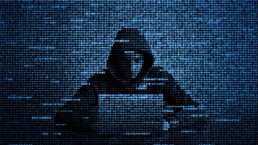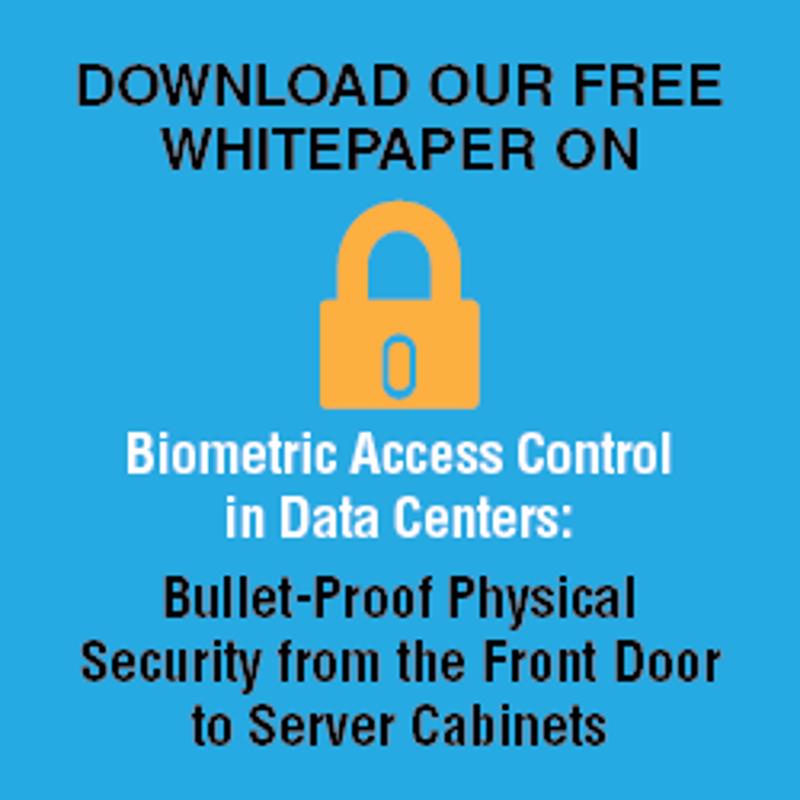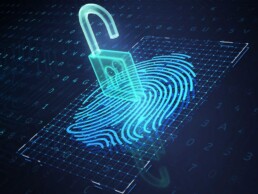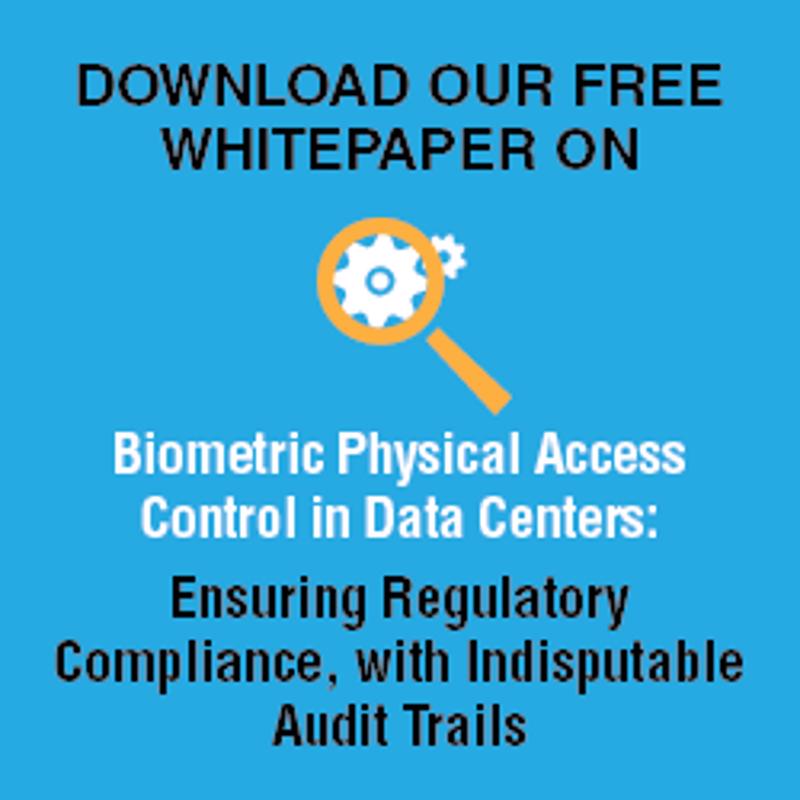How do we keep hackers out?
Hackers are nefarious individuals who steal passwords, break into data centers and figure out ways to get access to confidential valuable information. Government agencies and corporations around the world continually invest in new solutions to prevent hackers from gaining access to their confidential data, but these efforts do not always succeed in keeping hackers out. One of the main problems with network and data center security is that it is based on passwords and keys. This is why organizations interested in protecting their data should consider biometric security measures.
"Companies also use biometric security to protect important technology assets."
Two types of hackers perpetrate security breaches
Some hackers are able to penetrate firewalls and crack passwords, and they do this from the comfort of their own home. Others hackers, however, include some physical form of theft in their craft. This could involve looking over someone's shoulder as they type their password, using another person's email account when they are absent, sticking an unauthorized USB into a server rack or a host of other tactics. Biometric security measures, such as fingerprint scans, are especially effective at keeping out hackers of the second variety. By placing fingerprint scanners at the entrance to server rooms, organizations can ensure that unauthorized individuals do not gain access to sensitive data. Companies also use biometric security to protect offices, computers that house client information and other important technology assets.
It is relevant to mention that until biometric security is used to prevent illegal access to all electronic resources, vulnerabilities will persist. Apple, for example, has already made strides in this area with Touch ID. By including a fingerprint scanner with iPhones, the company is helping users protect their email accounts, phone numbers, pictures and other electronic files. The Motley Fool mentioned that this technology may soon be rolled out to Apple computers as well. If personal computers were enabled with this technology, it would help limit hackers' ability to physically steal passwords. Network breaches would, in theory, occur less often as a result.
What are the implications of insufficient security measures?
Reuters reported recently that U.S. securities regulators are investigating a group of hackers that broke into corporate email accounts and stole confidential trade information. The Securities and Exchange Commission has asked the companies to provide details regarding the data breaches. John Stark, former head of Internet enforcement at the SEC, explained why this case is so important.
"The SEC is interested because failures in cybersecurity have prompted a dangerous, new method of unlawful insider trading," said Stark, according to the news source.
The hacker group, known as FIN4, hacked into the email accounts of more than 100 companies looking for information on upcoming deals and financial trades. These types of information thefts can result in millions of dollars stolen. It is curious to wonder how biometric scans may have prevented this.
The New York Times also reported on the case against personnel in the St. Louis Cardinal's front office who are accused of hacking the network that house the baseball intelligence for the Houston Astros. Apparently, during a spring training session in 2014, a group of Cardinals employees used a computer in a residence near the team's complex in Florida to steal sensitive information. In this case, the hackers tried to mask their location, but the Federal Bureau of Investigation was able to trace their location. At least four members of the team's baseball operations staff have hired criminal defense attorneys.
While baseball information is not as sensitive as trade data, the hack illustrates that better security measures are needed in every industry. It would also not be surprising if these hacks did not occur solely over a network. It is likely that insiders or unauthorized individuals were able to access internal systems – facilitating the breach.
Ultimately, biometric security is most effective at protecting physical assets, but that does not mean it can't be used in other areas as well. Whether it is a corporate data center or the email account of a baseball team's general manager, the world needs better protective measures.
Related Articles
Nothing found.
Biometrics and the evolution of data protection
Biometric security is growing as a trend in the technology industry. Fingerprint scans, in particular, are now widely used with mobile payment programs like Apple Pay and Samsung Pay. However, that is just one of many uses for the technology. Government agencies, financial institutions and data centers use biometric scans to safeguard their data and ensure that access to sensitive information is only granted to authorized individuals. There are many reasons why biometric technology is beneficial, especially since it represents an evolution in the way people secure their data.
A cutting edge technology
One of the reasons biometric technology is an effective way to secure confidential or sensitive information is because it is based on things that are not easily replicated. Each person's face, iris and fingerprint is unique, so using these things to authenticate access makes sense. Fingerprint scans are the most prevalent today and are used in multiple ways. From mobile payment programs and bank vaults, to data centers and government offices, fingerprint scans offer a way to keep intruders and unauthorized individuals out, by having an impenetrable line of defense. TechZone360 pointed out that airports, like Miami International, have started using biometric fingerprint data at their passport control desks, which speaks to the ubiquity of the technology.
"It is much harder to steal a fingerprint than to steal a password."
Biometrics are stronger than passwords and keys
It is much harder to steal a fingerprint or an iris than it is to steal a password. There are many ways that hackers are able to gain access to passwords. A hacker can sometimes guess what a person's password is based on personal information like a child's name or birthday. Sometimes hackers send phishing emails to unsuspecting people and coerce the information out of them. Other times hackers can simply look over a person's shoulder to learn their password. With fingerprint scans, these things are not possible. It is near impossible for a hacker to crack a 16-character key – replicating a fingerprint is considerably more difficult than that.
Fingerprint scans can help guards workflow processes
Today, security is one concern, but compliance is another major one. Mike DuBose, a former Justice Department official explained that unauthorized insider access is often the most common form of security breach.
"But amidst all the concern and discussion over foreign hacking, what gets lost is the fact that the vast majority of serious breaches involving trade secrets or other proprietary or classified information are still being committed by insiders," said DuBose, according to the National Journal.
As such, it is important for organizations to protect themselves from the inside just as much as the outside. Having the strongest network security and firewall doesn't do much if a malicious employee can simply walk over to a server room, stick a USB into the slot and steal sensitive information. Also, sometimes these events are a mistake. If an organization does not clearly define its workflow processes and designate who is authorized to sign off on specified elements, then they open themselves up to the possibility of serious data corruption. Tech companies need to guard proprietary information, health care companies need to make sure pharmaceutical testing is done according to regulation and, in the finance sector, firms need to protect client account information. TechZone360 mentioned that health care companies especially benefit from biometric security in the areas of patient verification and research data access. Biometric scans offer a practical way to not only limit access to outsiders, but limit access to unauthorized insiders as well.
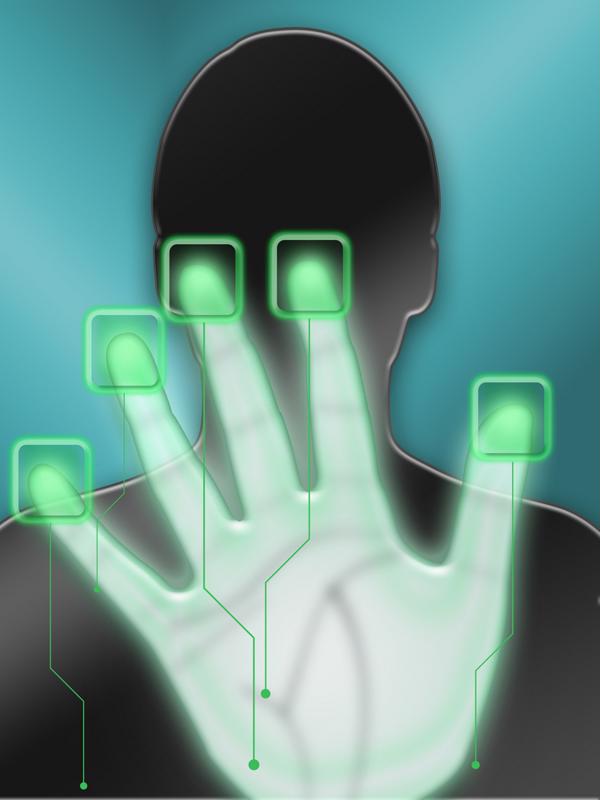
Countless companies and organizations use biometric security
If biometric security was not effective, it would not be used by governmental agencies and tech companies alike. The most obvious example is that Apple iPhone's Touch ID. A recent press release noted that by 2021, onboard fingerprint readers in mobile devices will exceed 1 billion units a year, representing 34 percent of all smartphone and tablet shipments around the world
ABI Research estimated that in 2015, revenues for the biometric markets will amount to $13.8 billion, reported TechZone360.
Iris and brain scans are coming soon
According to TechWorm, Blair Armstrong, postdoctoral researcher from the Basque Center on cognition, brain and language , used the brain signals of 45 people to determine that brain reactions are diverse enough for a computer system to differentiate identities, with accuracy of up to 94 percent. While brain scans may hold promise for the future, the technology still needs to be refined further. Regardless, developments such as this prove that biometrics will more than likely be very important in coming years. Kevin Bowyer, a professor at the University of Notre Dame, said Armstrong's work "stretches the boundaries of how we think about biometrics."
Ultimately, for companies looking for stronger ways of protecting their data, biometric fingerprint scans are a good place to start. Protect your server room from intruders and guard your workflow processes with cutting-edge technology. There are too many benefits to ignore.
Related Articles
Nothing found.
Biometric scans protect data better than passwords
Data security is not simply a matter of encryption, secure networks, long passwords and firewalls. Often, insider negligence or malicious conduct is the leading cause of data breaches. Increasingly, biometrics are seen as the future of data security.
Passwords aren’t much more than abc123
The most sophisticated encrypted network isn’t very secure if a person can simply walk into the server room and stick a USB into one of the slots. Additionally, while passwords and randomly generated keys seem like strong protective measures, the truth is that they are still highly susceptible to hacking. Government Technology pointed out that addressing password security is high on the White House’s to do list. Michael Daniel, cybersecurity coordinator for the president, recently expressed his views on password security at an international conference.
“Kill the password dead as a primary security measure,” said Daniel, according to the news source.
“A fingerprint is much harder to steal or replicate than a password.”
Today, passwords are used to secure bank accounts, server rooms and even accounts on Netflix, but experts argue there is a better way. Sadly, however, according to the news source, many business have not yet invested in technology that could lessen their security vulnerability. David Kane, CEO of Ethical Intruder told Government Technology mentioned that stealing passwords is not necessarily complicated, but the theft can be difficult to trace.
“The beauty of the password hack is, it’s not elegant,” said Kane. “But if I get the password of the CEO, people will never know that I hacked into the system.”
This is why organizations should look into biometric security solutions. A fingerprint, for example, is much harder to steal or replicate than a password. Companies can use fingerprint scanners to control access to certain data and ensure protection from malicious hackers or negligent insiders. Biometric scans offer the dual function of serving both compliance and security.
The government and Apple are both fans of biometric technology
GCN Magazine reported that The Department of Homeland Security is big on biometric identity management. The DHS is not only looking for better ways to store and analyze biometric data, it is also investing in off-the-shelf solutions capable of business process management, transaction authentication and analytics capability. The agency is looking to replace its current tools with a DHS-wide system that will include, among other things, identification, verification and search. While the system uses all three methods of biometric identification: fingerprint, iris and facial, fingerprint remains the primary method. The high level of endorsement for biometric technology by the agency speaks to its sophistication.
According to SearchCloudSecurity, Apple may soon be expanding its use of biometric technology as well. Apple’s Touch ID biometric verification system was introduced in 2013 with the iPhone 5s, allowing users to make purchases in iTunes and verify the transactions with a fingerprint scan. Up until now, the biometric data was stored on the phones, but that may change. If Apple expands the use of Touch ID to the cloud, users will be able to make payments with secondary devices, as well as through NFC or Bluetooth. The actual fingerprint scans would be secure, instead using “enrollment fingerprint data” to verify payments.
Data breaches are no joke
Business Insider reported that the cost of data breaches is rising. According to a study by Ponemon Institute, the average cost of a data breach is now $3.8 million, up from $3.5 million in 2014. The Ponemon Institute also found that the leading cause of data security breaches is non-malicious employee error, accounting for approximately 39 percent of instances. The institute explained that these beaches are typically due to negligence, complacency, or inadequate access controls to confidential data. Larry Ponemon explained that many companies are not aware of the reality on the ground.
“The rise in identity theft and cybercrime has made data security a top-of-mind issue for many Americans as well as corporations,” said Ponemon. “Companies spend considerable resources to combat outsiders, and the data suggests they are successful. However, companies have begun to realize that to protect customer trust, company brand and competitive secrets, they must now focus on the threat within.”
An MIT panel recently cited lack of spending as the main reason companies are susceptible to breaches, according to CRN. Christopher Hart, an associate at Foley Hoag data privacy and cybersecurity expert, commented that despite efforts to educate companies, they still reach for cheaper options over the best strategies in the market. Biometric identity management offers companies a way out of the compliance and security trap, but they will have to find their own way or face the consequences.
Related Articles
Nothing found.
How adequate data center security might have prevented the IRS hack
In the last year, high-profile data breaches have hit numerous health centers, retailers and agencies. These hacks highlighted the need for more access control, higher data security budgets and, in general, a more focused approach to data center security. Until such measures were taken, some admonished, these breaches would continue and ordinary people would be at risk of losing valuable information like bank account PINs and Social Security numbers.
Unfortunately, there are still plenty of holes. On Tuesday, May 26, the Internal Revenue Service released a statement saying 104,000 taxpayers' accounts were compromised, according to The Washington Post. Hackers made off with individuals' tax returns from this past spring by infiltrating their past tax filings. By manipulating an IRS system called "Get Transcript," cyberthieves gained access to prior tax returns and used that information to fraudulently file new returns.
To bypass IRS security protocols, these hackers must have already had some restricted information, according to IRS Commissioner John Koskinen.
"A hack of this magnitude indicates a failure at some level or another."
"[O]ur criminals already had to have personal identifiers available and personal information for each taxpayer," Koskinen said in a press conference. "We're confident that these are not amateurs but organized crime syndicates that not only we, but others in the financial industry are dealing with."
Industries work to defend against damaging breaches
This wasn't the first time the IRS demonstrated some frailty when it comes to digital security. Suspicious tax filings increased this year, though Koskinen said the two were not related. Still, the IRS is an organization with a high degree of access to the public's most valuable financial information. As such, a hack of this magnitude indicates a failure at some level or another.
One of these techniques could be as simple as addressing shortcomings highlighted by government audits. According to USA Today, federal audits of the IRS that took place from 2007 to 2014 repeatedly found potential security risks, including hiring ex-convicts without a background check and neglecting to vet employees with access to sensitive information.
"Collectively, these databases failed 30 percent of our tests," one government audit assessed in October 2014. "Exploitation of the vulnerabilities found could result in unauthorized accesses to taxpayer information and ultimately result in identity theft or fraud."
A number of data centers were able to demonstrate full compliance with recent audits, according to a press release from 365 Data Centers, one of the largest colocation facilities in the U.S. All 16 of 365's facilities passed inspection for industry standards by HIPAA, PCI, ISAE 3402, SSAE 16 and SOC 2.
"Certifying compliance across all facilities is a significant accomplishment and an uncommon feat these days," said Scott G. Price, managing director for independent auditor A-lign.
By passing these inspections or resolving the issues they might reveal, organizations can better protect their clients' information.
Biometric security can restrict access
Untrustworthy employees can be the entry point for large-scale hacking operations, so organizations must be sure to hire the right people. Fortunately, there are other ways to reduce the risk of insiders working with malicious hackers.
First and foremost, institutions like the IRS must only hire those with clean backgrounds and no risk of leaking information. Still, even those methods may fall short of identifying every potential criminal. These companies cannot deny employment unless there is grounds to do so.
Instead, the IRS and other organizations can leverage biometric access control to limit who can use certain rooms, server cabinets and other entry ways. This technology requires a piece of physical identification, via fingerprint reader, iris scanner or other system, to gain access. Rather than having a keycard or PIN, trusted individuals use their own fingerprints as the key.
Additionally, these methods can allow the center to track when, where and by whom a given access point was used. This information can provide insight on any suspicious activity, as well as provide an audit trail for federal inspections.
The best of these systems require two separate physical IDs to gain access, provided simultaneously. That means anyone who sought to infiltrate a server cabinet protected by such a technology would need an accomplice with an equal or higher level of security access. So far, none of these systems have been breached.
By working with biometric technology and remedying the shortcomings audits reveal, the IRS and other large organizations can be safe havens for their clients' information and identities.
Related Articles
Nothing found.
3 reasons why security spending is cheaper than not having it
Every business must carefully budget its resources to maximize productivity, efficiency and safety. This task can be more or less complicated, depending on the size of the business, the industry involved and a number of other factors, but it's always a necessary step. For data centers, this exercise is crucially important – it can be the difference between serving clients well and losing precious digital assets.
Budgeting for a data center's needs involves all the standard resourcing expected with running a business – paying staff, covering overheads, renting space, and so on. But it also requires investment in sophisticated technology and state-of-the-art security measures. It is in these latter fields where some data centers lose sight of their priorities. First and foremost must come security – without it, none of the other expenditures will make any difference. If a data silo can't protect its clients' assets, it is an unsuccessful data center.
"Without security, none of the other expenditures will make any difference."
But security spending doesn't have to mean pouring money into a funnel and never seeing it again. By pooling necessary funds into the right security systems, like biometric technology, a data center can end up saving money in the long run. Here are three reasons why:
1. Avoid fines that result from failing audits
Biometric access control allows a data center to not only protect server cabinets from unauthorized entry, it also registers when, where and by whom a given area is accessed. That means these organizations can create an indisputable audit trail at any given time. Additionally, biometric security complies with regulatory oversight calling for rigorous access control from organizations like the RSA. Failure to align with these guidelines may also result in fines and wounded reputations – both of which will yield a financial hit.
2. Protect against costly attacks and theft
Above all, these systems protect the user from unwanted intrusions and malicious acts. Data centers are nothing if they can't protect the data they store – they must be fortresses for their clients. Succumbing to hacking or thievery would not only cost these centers a lot of money in repairs, it would also do irreparable damage to the center's value in the eyes of potential customers. In this way, a lack of security has two hits: the one the center feels at the time of the attack, and the one it feels later when the data center can't earn the trust of new clients.
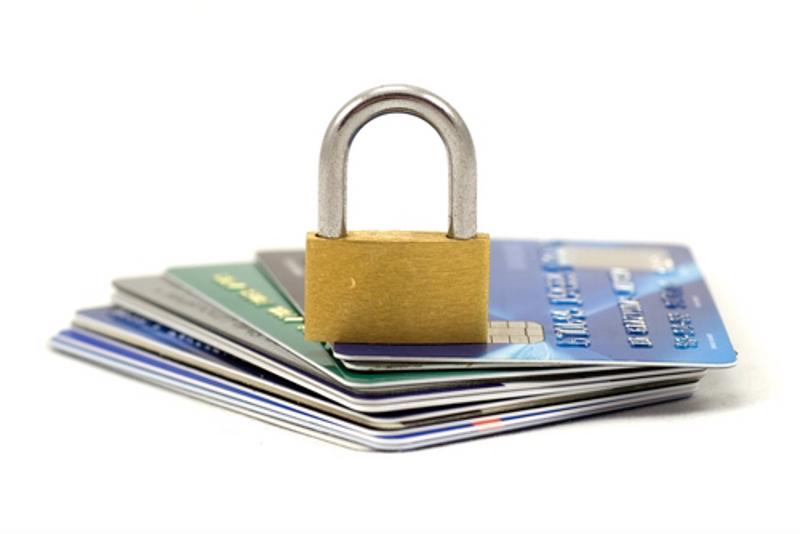
3. Limit unnecessary downtime
If an attack results in a failed network or temporarily interrupted connection, there is more at stake than the potential of compromised account information. Any productivity lost as a result of network tampering can be attributed to a lack of adequate security. Once that happens, the data center will wish it had ponied up for the security system required rather than losing more than it would have spent in the first place.
Biometric access control can be an integral part of a whole-center security solution. While firewalls, sophisticated passwords and other security measures are also important, none of those guarantee access control from the front door to the server cabinet the way biometric technology does.
Related Articles
Nothing found.
Data loss prevention tools take the spotlight
There is one thing that most law enforcement, disaster recovery and emergency response teams are likely to agree on: the best way to address these events is to prevent them from happening in the first place. It is far easier to put the necessary protocol and prevention tools in place beforehand than it is to deal with cleaning up the mess afterward. This holds true for nearly every form of emergency. Unfortunately, there are some disasters that are impossible to prevent completely. But for data loss, the organization involved has much more control.
"Many organizations are still unsure of exactly how to deploy data loss prevention tools."
Data loss prevention (DLP) tools have been around for nearly a decade, according to TechTarget, but many organizations are still unsure of exactly how to deploy them or which ones to use. While there are various tools these teams have at their disposal, biometric technology is perhaps the most reliable.
The direction of the DLP industry
For most companies, it isn't a question of adopting tools that would prevent data loss – by and large, organizations have some practice in place. Rather, it's a matter of using the right tools, in the right places, and to the right degree.
"A lot of people in that small to medium size space are more concerned with survival, ease of use and convenience in their day-to-day operations than what are effective best practice security controls," Geoff Harris, director of York, U.K.-based Alderbridge Consulting Ltd., told TechTarget. "Unless organizations have to meet industry compliance standards or government criteria, often they will sail by and avoid implementing these things."
While doing the bare minimum is not an ideal way to conduct business, Harris has a point – no company wants to disrupt the workplace or their employees' days with stringent security systems. That's why these organizations would do well to implement biometric access control wherever applicable. This technology is sophisticated, yet simple and non-intrusive. It allows individuals with adequate credentials to be granted access to appropriate areas via fingerprint scanner. In this way, an organization won't have to worry about the wrong people accessing, stealing or unknowingly spilling sensitive information.
Department of Justice provides plan of action
The U.S. Department of Justice (DoJ) has a cybersecurity unit that focuses on protecting the country's digital assets and valuable information from malicious hackers. But the team also has advice for organizations seeking to shore up their own defenses, reported the National Law Review. The DoJ also recognized the steps before a disaster as the most crucial part of security.
Most of the cyberthreat prevention techniques involved identifying the most valuable assets and developing a company wide protocol in the event of a breach. But most importantly, the DoJ emphasized having "appropriate technology and services in place before an intrusion occurs." That means taking advantage of access control systems like biometric technology to prevent the wrong people from accessing important areas and server cabinets. Best of all, some biometric security systems can function even when the network is down.
Related Articles
Nothing found.
Monitoring insider threats in a data center
Arguably the most difficult threat to counter is the one that comes from inside the company. Internal data breaches are becoming increasingly common in the age of cloud computing and data center management, and many IT professionals are pondering the best kinds of preventative approaches. Whether it’s an employee, a business partner or a contracted worker, theft of intellectual property and other private information is on the rise. Biometric technology might be the most effective security solution of them all.
By implementing biometric security in a data center, business leaders and IT managers can keep a close eye on internal activity, such as the person who accessed a server cabinet and the time they did so. Paired with comprehensive policies and responsible access mandates, a business can use biometrics to prevent internal data breaches on any scale.
Morgan Stanley cyberattack and data center oversight
Morgan Stanley recently announced that a wealth management worker stole account information from about 900 clients. The company promptly fired the employee and alerted law and regulatory authorities.
Mayiz Habbal, the CEO of Capital Markets Leadership Group, told InformationWeek that the internal data breach reflects problems with the infrastructure and policies of Morgan Stanley. Bob Olson, the vice president and head financial services for Unisys, added that at-risk businesses should equip workers with only the information they need to know.
“I think there’s acknowledgement that there are crown jewels in financial services – client data, clearing, trading information,” Olson said, according to the news outlet. “You want to cloak those and make sure you have the ability to limit who has access to the crown jewels.”
“A business can use biometrics to prevent internal data breaches on any scale.”
Insider threats from all angles
Michael Dent, the chief information security officer of Fairfax County, Virginia, told CIO.com that business leaders and IT managers should understand the various potential roots of internal threats.
“The insider threat comes in so many different ways that there is really no magic answer, I think, for anyone,” Dent said, according to the publication. “People need to understand that insider threats aren’t just your employees. They also are your contractors, your vendors, your volunteers, potentially, that come in and work for you.”
Proper data center security requires a company-wide effort, sound policies and a commitment to innovative solutions. Biometric technology can be the vital step that protects a company from internal threats and enables business to continue on as usual.
Related Articles
Nothing found.
Biometrics can restructure government security
Cybercriminals around the globe regularly target political agencies in the U.S. The inherent confidentiality and value of the information partly contribute to the frequency of these data breaches. However, the attacks can also be viewed as a form of dissent against the world’s most powerful government, which also happens to suffer from an underdeveloped security infrastructure. All of these details amount to a developing trend – in the eyes of hackers, political departments are ripe for the picking.
“The ramifications of data breaches against political agencies have been broad and costly.”
The ramifications of data breaches against political agencies have been broad and costly. However, legislators are beginning to work toward effective solutions that can help counter the threats. Data encryption and decentralization via colocation solutions can serve as valuable methods of security. But neither can approach the quality of biometric technology offered by Digitus.
Biometric security uses fingerprint readers and vocal recognition to ensure that only the right employees can gain access to a data center. It is one of the most competent forms of protection on the market. And as political entities continue to reshape their approaches to cybersecurity, biometrics should play a key role.
Defense secretary seeks help from Silicon Valley
Defense Secretary Ashton Carter recently spent time in Silicon Valley, California, to discuss the Pentagon’s security efforts and tap into the vast pool of local tech talent, according to The New York Times.
Many tech professionals view encryption as a viable approach, but a growing number of critics believe that it could too easily expose vital data, the news outlet noted. Biometric security, however, has a bulletproof track record.
“The amount of information that intelligence officials are collecting – even if some sources go dark – is dramatically more than it has been in history,” said Paul Kocher, a cryptographer, according to the news outlet. “The idea that we need to stop rolling out technology to keep our industries and businesses safe, to keep a few sources from going dark, is certainly not a trade-off.”
Security executive denounces government security
Amit Yoran, president of security firm RSA, recently spoke with IDG News Service about the widespread lack of tech awareness in the political sphere. He told the news outlet that without the know-how, political entities will not be able to protect themselves from external threats.
“I don’t see how you can have any government entity take an operational role in defending the networks themselves,” Yoran said.
Biometric technology can bridge the divide between well-versed tech professionals and beginners in the political world by closely monitoring access control at all hours of the day.
Related Articles
Nothing found.
Increase in cyberthieves leads to better security measures
These days, digital assets prove more valuable than their tangible counterparts. As a result, thieves are doing most of their damage via laptop or USB port rather than with a picked lock or smashed window. In the wake of several high-profile data breaches and ongoing digital security threats, a number of agencies have stepped up their efforts to curtail such criminal activity.
At the organizational level, managers and IT teams can shore up their defenses by turning to biometric security. This versatile technology provides access control at any point a company chooses – from the front door to the server cabinet. That way, these facilities can guarantee no one is allowed into restricted areas, while also keeping track of where and when a given area is accessed.
"More criminals elect to conduct their shady business in the cyber arena."
Cyberthieves get their start as traditional criminals
According to new information from police in the U.K., crime rates aren't really falling – it's just that the venue has changed. Now, more criminals elect to conduct their shady business in the cyber arena rather than the real world, reported The Telegraph. As it turns out, 6 in 10 cyberthieves have a criminal record completely unrelated to the Internet. Several were even convicted of assault – a far cry from the stereotypical idea of a computer geek.
The report, conducted by the Bedfordshire Police, found cyberattacks are "significantly higher" than many data suggests. It also shows "those traditional offenders are changing their behavior and moving to the Internet," as criminals with little IT experience view cyber crime as a "low-risk, high-reward type of offending."
Government agencies respond to influx of new threats
As the cybercrime arena continues to attract thieves, several agencies have taken measures to match it. Both the FBI and IRS have shored up their cybersecurity divisions to take on both external and internal threats.
The FBI recently created and filled a new role within its Crime, Cyber, Response and Services Branch (CCRSB), according to PYMNTS. The newly appointed Joseph M. Demarest Jr., now associate executive assistant director for the CCRSB, will help the agency keep up with all aspects of cybercrime.
"In his new role, [Demarest] will serve as chief operations officer for CCRSB – providing technical advice and guidance across its components while establishing and nurturing relationships with federal, state, and local law enforcement and intelligence agencies," FBI Director James B. Comey said in a press release.
Meanwhile, the IRS is tackling some of the internal fraud of which it has been recently accused by assigning about a dozen agents to investigate, reported The Wall Street Journal. The team will attempt to limit the tax fraud that has plagued the agency since 2011, as cybercriminals attempt to steal others' tax refunds. Many of these hacks involve identity theft – which grew to represent 25 percent of all IRS criminal investigations in 2014.
Though these efforts are encouraging, organizations must also take it upon themselves to reduce cybercrime. That means installing a biometric access control system, like a fingerprint scanner, at every vital entry point. That will keep unqualified staff from accessing high-security areas and prevent the wrong people from compromising digital assets at a whim.
Related Articles
Nothing found.
Biometrics support data center management
Plenty of ancillary costs are affiliated with maintaining a smoothly running data center. The list is expansive, and as the data center market becomes an increasingly central part of global commerce, it continues to grow.
IT managers must keep track of access control, ensuring that only the right employees can tap into private information during certain hours of the workday. They need to prepare for both external and internal threats by establishing sturdy cybersecurity measures, such as data encryption and decentralization, and consistently follow the regulatory requirements of FISMA, HIPAA and other standards. Environmental controls shouldn’t be overlooked either. Factors such as temperature, air flow, water, smoke, cooling and power are just a few of the many other variables at play in data center management.
Biometric technology from Digitus can help tech professionals closely monitor the many components of a data center. And by streamlining these processes, they can ensure regulatory compliance and best practices while getting back to the core activities of their business.
“Biometric technology can help tech professionals closely monitor their data center.”
Assembling a budget for the data center
Mark Evanko, a representative of data center provider BRUNS-PAK, recently spoke with Data Center Knowledge about the difficulty in estimating the total cost of a data center.
“What we are seeing is the total cost of ownership of a data center, such as the design build, colocation, cloud, disaster recovery and network costs need to be considered, and you also need to consider the associated risk elements,” Evanko told the news outlet.
He added that the growing use of colocation facilities and other third-party vendors has put data-driven enterprises at greater risk, according to the news outlet. While these options often market themselves as secure solutions, Evanko said that they don’t inherit liability for potential damages.
Biometrics and data center consolidation
Deloitte, a market research group, noted that data center expenses run between $10 million and $25 million per year. When a larger enterprise operates many data centers at once, Deloitte principal Ranjit Bawa said that the costs can be difficult to manage.
“CIOs who are thinking ahead two to three years don’t want to be saddled with legacy infrastructure or investments they can’t redirect,” Bawa told the source. “Data center consolidation and application modernization allow them to essentially ‘future-proof’ their technology footprints.”
Biometric security not only prevents data breaches – it automatically logs vast amounts of data related to access control and regulatory compliance. It’s a cost-effective option for businesses with an expansion plan and a commitment to security.
Related Articles
Nothing found.
